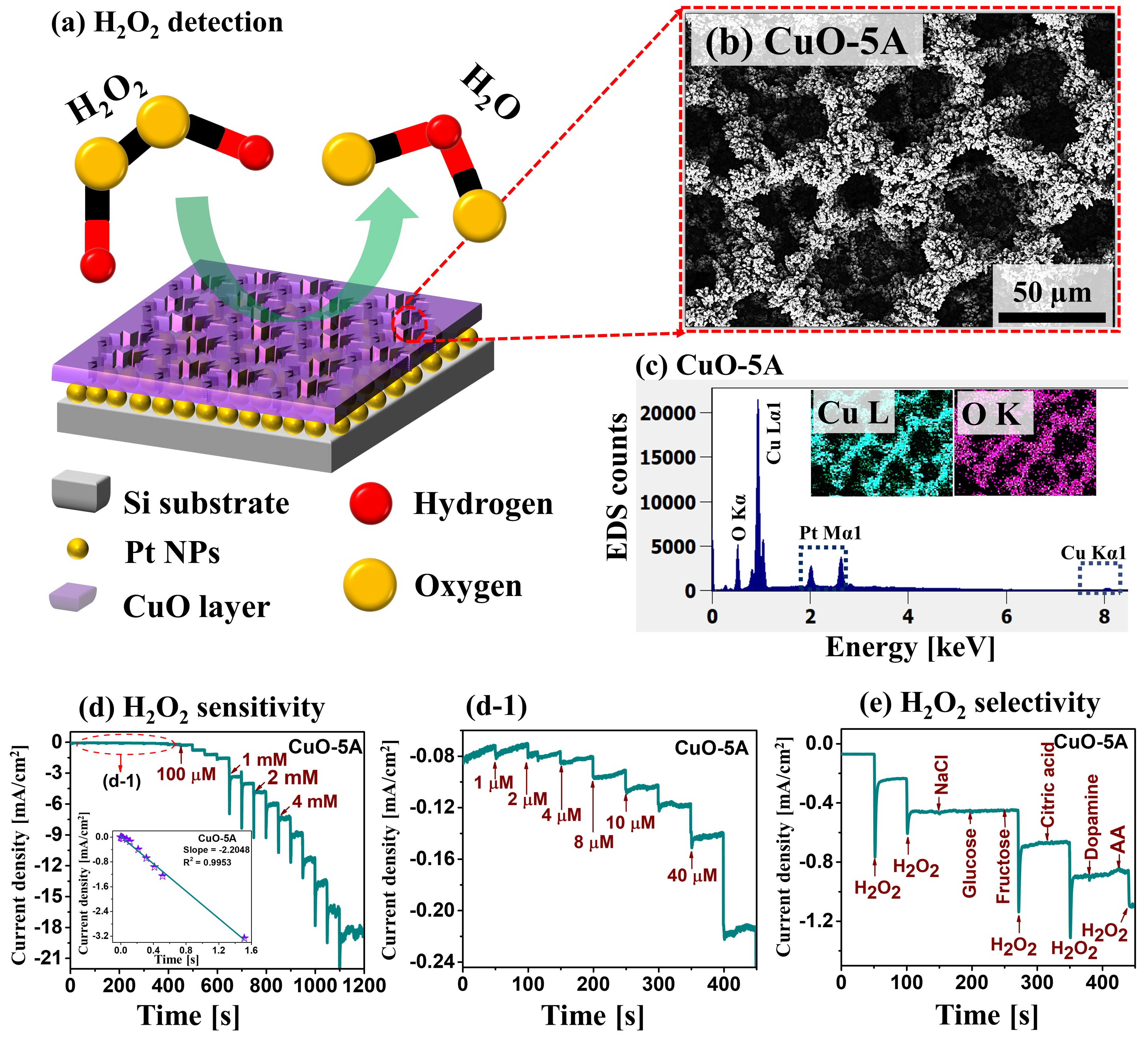A super-porous hybrid platform can offer significantly increased number of reaction sites for the analytes and thus can offer advantages in the biosensor applications. In this work, a significantly improved sensitivity and selectivity of hydrogen peroxide (H2O2) cancer sensor is demonstrated by a super-porous hybrid CuO/Pt NP platform. The super-porous hybrid platform is fabricated by a physiochemical approach combining the physical vapor deposition of Pt NPs and electrochemical deposition of super-porous CuO structures by adopting a dynamic hydrogen bubble technique. Under an optimized condition, the hybrid CuO/Pt biosensor demonstrates a very high sensitivity of 2,205 µA/mM∙cm2 and a low limit of detection (LOD) of 140 nM with a wide range of H2O2 detection. This is meaningfully improved performance as compared to the CuO-based H2O2 sensors as well as to the previously reported metal oxide based H2O2 sensors. The hybrid CuO/Pt platform exhibits excellent selectivity against other interfering molecules such as glucose, fructose, dopamine, and ascorbic acid. Due to the synergetic effect of highly porous CuO structures and underlying Pt NPs, the CuO/Pt architecture offers extremely abundant active sites for the H2O2 reduction and electron transfer pathways.

